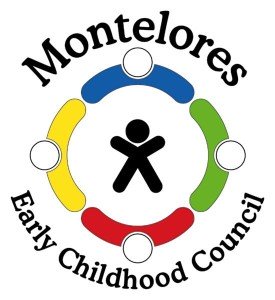Read a summary of The Whole-Brain Child: 12 Revolutionary Steps to Nuture Your Child’s Developing Mind by Daniel Siegel, M.D. and Tina Payne Bryson, Ph.D.
This enjoyable book by Daniel Siegel, M.D. and Tina Payne Bryson, Ph.D. will help you understand your own brain and your child’s developing brain, and use that knowledge to raise a happier, more resilient child. Written for anyone who spends time around kids it’s a great guide on how to use all your interactions to help them develop into the kind of people we want them to be. This is down-to-earth parenting, using every day moments and interactions – the good, the bad, and the ugly (you know what I’m talking about here). The end of each chapter has a section for parents and other adults, applying the same strategies discussed in the chapter to the adult brain.
CHAPTER ONE: Parenting with the Brain in Mind
Because experiences are constantly shaping the brain for better or for worse, your interactions have a big impact on children’s brains. Integration is the key concept underlying the 12 strategies described in the book – connecting the many parts and functions of the brain to achieve well-being. In this chapter the authors introduce the concepts of neurons (or brain cells), the activation (or firing) of these cells, and the many connections these cells make with each other – the wiring.
CHAPTER TWO: Two Brains Are Better Than One: Integrating the Left and the Right
The two sides of our brains are different. The left side likes lists, sequences, logic, language, details, rules, and order. The right side pays attention to nonverbal signals, emotions, images, personal memories, music, art, creativity, and is more connected to the lower brain area that receives, understands, and processes emotional information. The two sides are connected by a bundle of fibers because we need them to work together, to be integrated. Young kids, however, are mostly operating from their right brains because they haven’t developed the abilities to use logic, understand time, use words to express feelings, etc. It’s our role to help them use both sides of their brains. Two strategies will help for kids of any age:
Whole brain strategy #1: Connect and Redirect: Surfing Emotional Waves
Step 1: Connect with the Right: When kids are experiencing big emotions, they’re operating from their right brain. Logic, language, telling them it isn’t so bad, trying to distract them – none of these strategies will work because they’re left-brain strategies. Instead, use your right brain to connect, to tune in to their emotions, to resonate with your child – acknowledge their feelings. Then and only then –
Step 2: Redirect with the Left: Use simple logic and language to suggest solutions to their problems. The authors caution that this does not mean permissiveness, that it takes practice to get good at this strategy, and that you have to maintain your own calm.
Whole brain strategy #2: Name It to Tame It: Telling Stories to Calm Big Emotions
Too often we “dismiss and deny” the emotional importance of life’s difficult experiences: we try to talk kids out of their feelings, or we avoid painful issues. Instead, pick a time when you and your child are feeling calm, and have a story-telling conversation about the difficult event. This strategy is integrating both sides of the brain – the left tells the story of the right brain’s strong emotion: taming by naming.
CHAPTER THREE: Building the Staircase of the Mind: Integrating the Upstairs and Downstairs Brain
Imagine the brain as a two-story house. The downstairs brain develops early and is responsible for bodily functions like breathing, as well as for strong emotional reactions like fight (anger), flight (fear), and freeze (fear). There’s a small structure in the downstairs brain that the authors call the “baby gate” of the mind – it causes us to react emotionally without thinking. Sometimes this is good, especially when we feel passionate about someone or thing; often it gets us into trouble (when we react instead of respond to experiences that aren’t life-threatening). The upstairs brain (the top part of your cortex, especially the area behind your forehead) develops later in childhood and on into adulthood; it’s the place where mental processes happen – good decisions, self understanding, emotional and bodily control, empathy, a sense of right and wrong, etc. All the actions we hope kids will take require the upstairs brain, which isn’t fully on-line yet, but we can still appeal to it using the following strategies:
Whole brain strategy #3: Engage, Don’t Enrage: Appealing to the Upstairs Brain
First make sure you have applied step 1 of Strategy 1 and connect. Then, once calm, help them find solutions to their challenges. Engage their upstairs brain in problem-solving.
Whole brain strategy #4: Use It or Lose It: Exercising the Upstairs Brain
“A strong upstairs brain balances out the downstairs brain, and is essential for social-emotional intelligence.” So throughout the day look for opportunities to help your child practice upstairs brain skills:
Making decisions: For toddlers, give choices about what to wear, what to drink, etc. For older kids, let them, with support and guidance, make more difficult choices about conflicting schedules or desires. Don’t rescue them, even if you can foresee that their choice might lead to their regret. However, help them predict possible outcomes.
Regulating emotions and the body: Be sure and model this yourself in all your interactions with your kids. Teach them calming techniques like taking a deep breath (“Swallow a bubble,” “Take a belly breath.”). Older kids can learn to count to ten, or take a mental time-out. Self-understanding: Ask kids questions that help them think about and reflect on their feelings, help them predict what they might feel in a new situation & how they might handle it. Also, model this for them by using self-talk out loud, “Hmmm. I seem to feel extra nervous. I wonder why? Maybe it’s because I don’t know what my boss will say when I ask for time off.”
Empathy: Ask kids questions about the feelings of others, about what someone’s actions might suggest about how they feel, about what might make someone feel better, etc. Show compassion and empathy yourself.
Morality: This isn’t just knowing what’s right and wrong but understanding how actions impact the greater good. We want our kids to do the right thing with compassion, kindness, and empathy – not because someone’s watching, but because they know right from wrong. The authors give examples of questions and situations to develop this.
Whole brain strategy #5: Move It or Lose It: Moving the Body to Avoid Losing the Mind
Movement changes brain chemistry, so when kids are near a breaking point and aren’t connecting with their upstairs brain, get them moving to integrate their brain. The same is true for adults.
CHAPTER FOUR: Kill the Butterflies! Integrating Memory for Growth and Healing
Memories are tricky because they’re not just experiences filed away in a file cabinet, exactly as they happened. And they’re not exact photocopies of the experience, either. In this chapter you’ll learn about two different kinds of memory, and how to help your kids (and yourself) integrate them. If we don’t help our kids integrate their difficult memories, their emotions will show up in their behavior – which can confuse both them and us. And it’s important to remember that what’s a challenging memory for a child might seem pretty harmless to us. The authors use cute cartoon drawings and catchy sayings to illustrate the strategies:
Whole brain strategy #6: Use the Remote of the Mind: Replaying Memories
Just as telling a “story” or narrative about a strong emotion is naming it to tame it, here we help kids get in touch with their unhappy and challenging memories to integrate them. The authors suggest we guide kids to think of their minds as a remote control that can fast-forward, skip, pause, and stop when remembering painful experiences. As adults, we should help them “rewind and remember” instead of “fast-forward and forget.”
Whole brain strategy #7: Remembering to Remember: Making Recollection a Part of Your Family’s Daily Life
Make daily family conversations a habit so kids always have a chance to talk about their experiences and memories. Ask open-ended questions that will get them thinking and encourage them to share more than a “yes” or “no.” Instead of the usual, “How was your day?” ask them questions like, “What was your favorite part of the day?” and “Tell me about recess.” Ask them about their not-so favorite parts of the day, too. Print those digital photos and make books and albums for your kids so you can talk about shared experiences together. Have a regular family movie night where you watch movies you’ve made of your kids, family, and experiences.
CHAPTER FIVE: The United States of Me: Integrating the Many Parts of the Self
In this chapter the authors introduce the idea of “Mindsight,” a term coined by Dan Siegel that mean understanding our own minds, which then we can then use to understand the minds of others. In this chapter you’ll read how to teach kids about the wheel of awareness, telling the difference between what they feel and who they are, learn to focus their attention, and learn to get back to their hub (center). This will help them develop Mindsight. Most of these concepts are for K-12 kids, but you yourself will benefit from applying them to your own mind. By modeling this for younger kids, you’ll be preparing them to use Mindsight as they get older.
Whole brain strategy #8: Let the Clouds of Emotion Roll By: Teaching That Feelings Come and Go
Teaching kids to get in touch with and verbalize their feelings is a good strategy. But it’s also important to teach them that feelings are temporary and changeable, like the weather. This helps them put feelings in perspective – they won’t last forever. This will help them regain a calm state more easily and maintain it when painful feelings come along.
Whole brain strategy #9: SIFT: Paying Attention to What’s Going On Inside
Teach kids to know what’s on the rim of their wheel of awareness and focus their attention on the following: the Sensations (messages) their body sends them; the Images they have from their experiences and imagination (from the right brain); the Feelings they have (right brain); and the Thoughts they are using to understand their world (left brain). This process is the basis for Mindsight and the chapter has strategies to make it fun.
Whole brain strategy #10: Exercise Mindsight: Getting Back to the Hub
By teaching kids that they can choose how to think and feel about what happens to them in life, that they aren’t victims, that they can use their mind to calm their brain, they’ll thrive. The authors
present ways to help kids get in touch with their “hub,” that peaceful, calm center.
CHAPTER SIX: The Me-We Connection: Integrating Self and Other
We need to help kids develop the second aspect of Mindsight – to integrate self and other – and develop relationships based on kindness, compassion, and empathy. Using the Mindsight skills they’re learning, with help from you and the developmental process, they can now learn to combine insight with empathy to develop interpersonal integration. It’s up to adults to create positive relationships with kids; to encourage them to make friends and form relationships by helping them be receptive instead of reactive, and to use Mindsight skills with others.
Whole brain strategy #11: Increase the Family Fun Factor: Making a Point to Enjoy Each Other
Spend time having fun, playing, and enjoying each other’s company. Every time you have enjoyable experiences with kids, their brains release a “reward” chemical called dopamine, and they learn that relationships are rewarding. You’ve probably tried some of the suggestions to implement this strategy – and if you haven’t, the time to start is now!
Whole brain strategy #12: Connection Through Conflict: Teach Kids to Argue with a “We” in Mind
Conflict is unavoidable in relationships, so teach kids how to handle it in helpful ways using Mindsight: 1. recognize others’ perspectives and viewpoints (teach them previous strategies); 2. teach them to understand nonverbal cues so they can attune with others; 3. teach them to repair the relationship after conflict.
Conclusion: Bringing It All Together
Being a whole-brain parent, or EC professional, and offering whole-brain “living” to kids by teaching them these strategies will have an impact on our lives now and in the future. Kids who can use Mindsight are the leaders of tomorrow.
If you would like to borrow this book, contact Mary Dodd and she’ll loan you her copy.




Connect With Us!